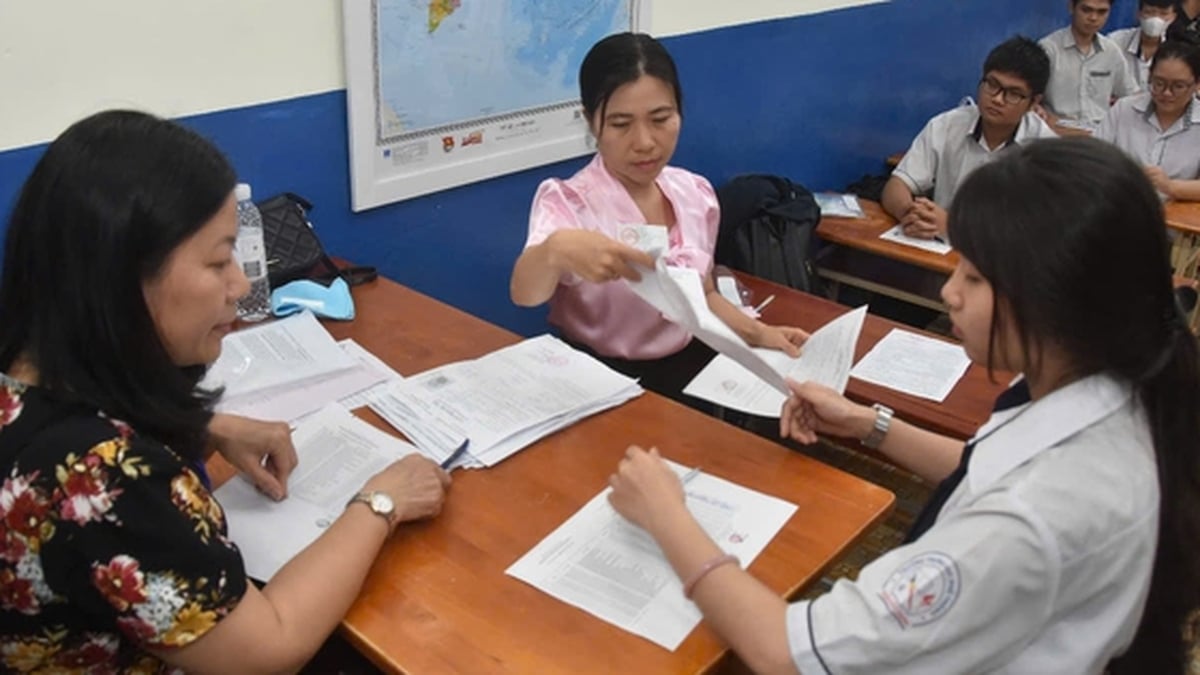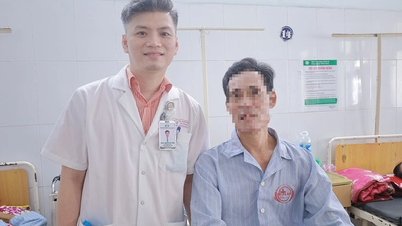In the "new normal" conditions, safely and effectively controlling the Covid-19 epidemic, Binh Duong continues to improve the capacity of grassroots treatment, rearrange isolation and treatment areas, and maintain the number of hospital beds appropriate to the epidemic level in the province.
Treating Covid-19 patients at Tan Uyen City Medical Center
Improving primary care capacity
Ms. Nguyen Thi Cau, 62 years old, in An Thanh ward, Thuan An city, went to the doctor and was found positive for SARS-CoV-2. After screening, the medical staff of An Thanh Regional General Clinic decided to quarantine and treat the patient at home. The patient was infected with Covid-19 but had mild symptoms (no signs of pneumonia or hypoxia), had no underlying diseases, was not obese, was alert, and had received all booster shots of the vaccine, so she agreed to quarantine and treat herself at home according to the instructions of the clinic's doctors. With the help of the clinic's medical staff and her own efforts, after 7 days of quarantine and treatment, the patient tested negative for the virus. Ms. Nguyen Thi Cau called the hotline to thank the doctors for their dedication in helping her recover from the disease.
Ms. Nguyen Thi Cau is one of many cases where doctors and medical staff do not quarantine and treat patients at medical facilities but instruct them to quarantine and treat them at home. Recently, home treatment has been effective, helping to reduce the burden on upper-level facilities and limit the number of patients becoming seriously ill and dying. Currently, the whole province has more than 70 patients quarantined and treated at home. Every day, the province receives 5-6 Covid-19 patients for treatment at medical facilities, but also successfully treats and discharges 7 patients/day.
Dr. Huynh Nguyet Phuong, Director of Thuan An City Medical Center, said: “Localities are strictly assessing and classifying the risk of people infected with SARS-CoV-2, collecting information on patients with underlying diseases from households, making a list of F0 cases at home, dividing them into risk groups; at the same time, assessing the risk of severe illness and timely referral. In addition, medical stations also instruct F0 cases at home to use the right medicine at the right time, monitor and supervise home isolation conditions and the care and nutrition status of F0”.
Guarantee of medicine, supplies and medical equipment
Currently, the Covid-19 epidemic is complicated and unpredictable. Most outbreaks in the community have been controlled, the number of new cases is mainly detected at medical facilities and through community screening. Following the direction of the Department of Health, localities have arranged adequate human resources, facilities, and ensured medical supplies and equipment to serve the work of admitting and treating Covid-19 patients.
Assessing and classifying the clinical level and progression of Covid-19 patients is an important step in triaging and providing timely emergency treatment to patients. Every day, treatment facilities on the first and second floors assess risks, closely monitor disease progression, promptly detect signs of severe progression in each patient, provide emergency treatment on the spot, contact hospital transfers and ensure timely and safe transfers, minimizing deaths. (Doctor Huynh Minh Chin, Deputy Director of Department of Health) |
In the new normal conditions, the Department of Health has directed units to proactively prepare quarantine and treatment facilities for F0 in the province. The preparation principle is to ensure that 20% of Covid-19 patients are on level 2 of the treatment tower/total number of infections according to forecast. These treatment facilities must ensure adequate facilities, equipment, means, and personnel to meet the 2% of Covid-19 patients on level 3. Treatment areas at district, town, and city levels receive and treat asymptomatic patients and mild cases. To improve treatment capacity, localities are urgently arranging to complete the treatment system on the first and second floors, investing in additional equipment to undertake the treatment of both mild and severe patients.
To ensure the best treatment for patients, Dr. Huynh Minh Chin, Deputy Director of the Department of Health, said that the department has directed medical units to proactively review and have plans to supplement and ensure adequate emergency equipment, intensive care, consumables, means, and medical equipment for treatment floors. The first floor must have at least an oxygen cylinder to meet the needs of emergency treatment for patients on oxygen through masks and glasses. The second floor must have at least a high-flow oxygen ventilator, non-invasive ventilator, oxygen cylinder, liquid oxygen tank, compressed air line, pressure suction line, and vaporizer to meet the needs of emergency treatment and intensive care for patients on high-flow oxygen, and non-invasive ventilation for patients with severe progression. The 3rd floor must have at least a high-flow oxygen ventilator, non-invasive and invasive ventilator, liquid oxygen tank, compressed air line, pressure suction line, vaporizer, liquid oxygen tank and gas oxygen bottle to meet the needs of emergency and intensive care for seriously ill and critically ill patients.
HOANG LINH
Source link





























![[Photo] Nghe An: Provincial Road 543D seriously eroded due to floods](https://vphoto.vietnam.vn/thumb/1200x675/vietnam/resource/IMAGE/2025/8/5/5759d3837c26428799f6d929fa274493)






































































Comment (0)